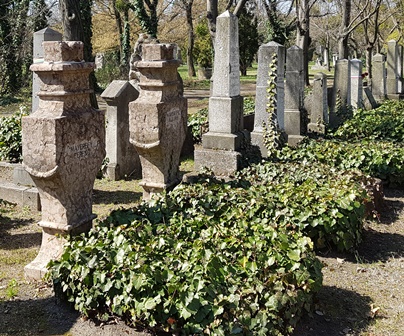National Pantheon Foundation

The collection includes the documents of the National Pantheon Foundation. In the 1980s, the Kerepesi Cemetery became an important place of Hungarian national heritage for the National Pantheon Movement. The movement attached messages to the cemetery that differed from the official socialist cultural policy: they emphasized different aspects of the past and in doing so created a potentially critical cultural perspective.
Ort
-
Budapest, Teve str. 3-5.
Auf Karte anzeigen
Sprachen
- Ungarisch
Name der Sammlung
- Documents of the National Pantheon Foundation (1983) (1991-2001)
Sammlungsgeschichte und kulturelle Aktivitäten
Inhaltsbeschreibung
Inhalt
- Fotos: 10-99
- Manuskripte (Ego-Dokumente, Tagebücher, Notizen, Briefe, Skizzen, etc.): 10-99
- Publikationen: 100-499
- andere: 100-499
- graue Literatur (Archivdokumente wie Broschüren, Bulletins, Merkblätter, Berichte, Geheimakten, Aufzeichnungen, Arbeitsunterlagen, Sitzungsprotokolle): 1000-
Betreiber
Besitzer
Interessensvertreter/Teilhaber der Sammlung
Themen
Schöpfer/in
Gründungsdatum
- 2012
Gründungsort
-
Budapest, Hungary
Auf Karte anzeigen
Autor
Sammler
Unterstützer
Wichtige Ereignisse in der Geschichte der Sammlung
Besondere Beispiele
Zugangsart
- teilweise öffentlich zugänglich
AutorIn des Eintrags
- Pál, Zoltán
2017-11-30 17:32:01
